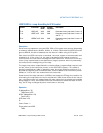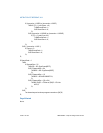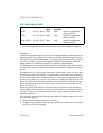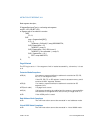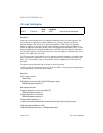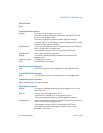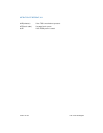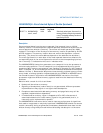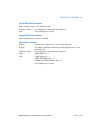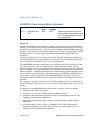
3-562 Vol. 2A LTR—Load Task Register
INSTRUCTION SET REFERENCE, A-M
LTR—Load Task Register
Description
Loads the source operand into the segment selector field of the task register. The
source operand (a general-purpose register or a memory location) contains a
segment selector that points to a task state segment (TSS). After the segment
selector is loaded in the task register, the processor uses the segment selector to
locate the segment descriptor for the TSS in the global descriptor table (GDT). It then
loads the segment limit and base address for the TSS from the segment descriptor
into the task register. The task pointed to by the task register is marked busy, but a
switch to the task does not occur.
The LTR instruction is provided for use in operating-system software; it should not be
used in application programs. It can only be executed in protected mode when the
CPL is 0. It is commonly used in initialization code to establish the first task to be
executed.
The operand-size attribute has no effect on this instruction.
In 64-bit mode, the operand size is still fixed at 16 bits. The instruction references a
16-byte descriptor to load the 64-bit base.
Operation
IF SRC is a NULL selector
THEN #GP(0);
IF SRC(Offset) > descriptor table limit OR IF SRC(type)
≠ global
THEN #GP(segment selector); FI;
Read segment descriptor;
IF segment descriptor is not for an available TSS
THEN #GP(segment selector); FI;
IF segment descriptor is not present
THEN #NP(segment selector); FI;
TSSsegmentDescriptor(busy) ← 1;
(* Locked read-modify-write operation on the entire descriptor when setting busy flag *)
TaskRegister(SegmentSelector) ← SRC;
TaskRegister(SegmentDescriptor) ← TSSSegmentDescriptor;
Opcode Instruction 64-Bit
Mode
Compat/
Leg Mode
Description
0F 00 /3 LTR r/m16 Valid Valid Load r/m16 into task register.




